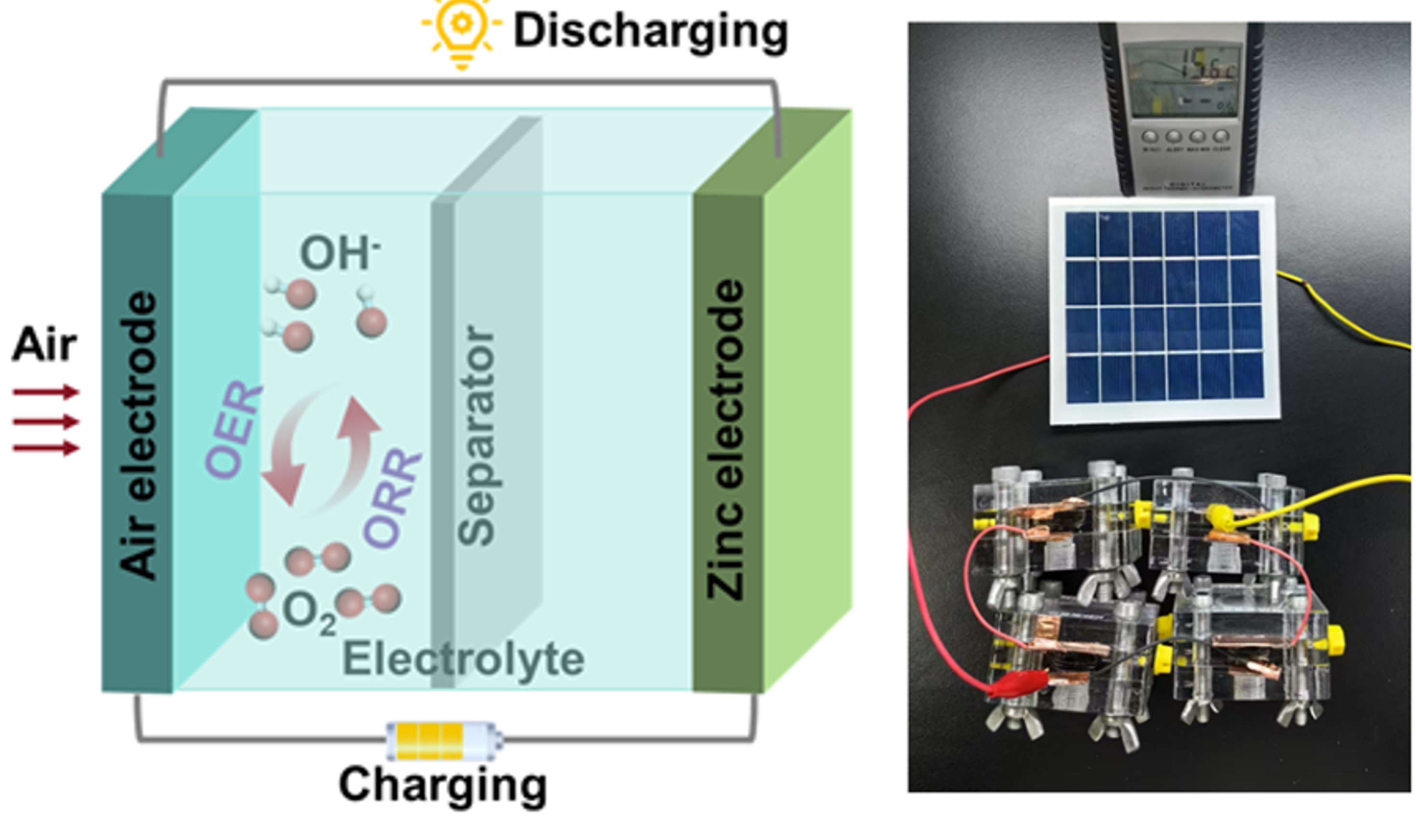An efficient bifunctional catalyst design strategy paves the way for more reliable high-performance aqueous rechargeable zinc-air batteries.
An atomic-level bilateral regulation strategy developed at Tsinghua University promises to significantly enhance the performance and lifespan of aqueous rechargeable zinc-air batteries (a-r-ZABs), a promising next-generation energy storage and conversion technology.
The new catalyst, gallium (Ga)-regulated manganese-ruthenium oxide (Ga/MnRuO2), addresses the stability-activity restriction of the oxygen reduction reaction (ORR) and oxygen evolution reaction (OER) in a-r-ZABs, paving the way for more reliable high-performance energy storage systems. Their potential applications include large-scale energy storage, such as power grids and electric vehicles, even in extreme environments.

The team’s catalyst preparation way, a glucose-urea foaming method involved, forms a Ga, Mn-doped RuO2 single-phase structure with porous sheet-like foam
The a-r-ZABs are mainly composed of Zn electrodes, air electrodes, and electrolytes. As the battery discharges, the oxygen from the air reaches the cathode to be reduced to H2O (ORR processes), accompanying the oxidation of zinc. The charging process is the reverse of the discharge process involving the oxygen species from H2O to be oxidized to oxygen.
The batteries utilize simple, readily available, and low-cost materials, coupled with their high theoretical energy density and safety, attracting more attention.
The batteries can also be integrated with periodic energy sources like solar power to form a comprehensive energy storage system, supporting the sustainable development and utilization of energy.

The a-r-ZABs used the Ga/MnRuO2 as cathode catalysts and were charged through a solar panel.
Enhanced catalytic bifunctional performance
“The efficiency of a-r-ZABs is highly dependent on the electrochemical performances of ORR and OER on air cathode”, says leading researcher, Rufan Zhang, an associate professor at the Department of Chemical Engineering of Tsinghua University.
Metal oxides with dual-active sites are promising bifunctional electrocatalysts in the a-r-ZABs. They can meet the different reaction requirements of ORR and OER, and tackle the inherent disadvantages of carbon-based bifunctional electrocatalysts.
But traditional dual-active site catalysts often struggle with either high activity or long-term stability, explains Zhang, leading to poor bifunctional performance and low energy efficiency of a-r-ZABs.
Zhang’s team recently proposed a bilateral regulation to prepare effective bifunctional dual-active metal oxide in the journal Angewandte Chemie International Edition.
By introducing both Ga and Mn into RuO2, the researchers have optimized the valence states of both active metals (Mn for ORR and Ru for OER) at the atomic level.
This catalyst showed both high activity and long-term durability for ORR and OER. “This bifunctional performance is a significant leap forward compared to current catalyst designs”, says Zhang.
Impressive Performance in a-r-ZABs
Beyond laboratory ORR/OER tests, the new catalyst also showed impressive results in a-r-ZABs.
In a-r-ZABs, the catalyst retained 86.7% of its initial capacity after more than 800 hours of continuous cycling at 10 mA cm² at room temperature.
“At low temperatures, the catalyst maintained its performance for over 2308 hours, making it one of the most stable catalysts ever tested in this field”, says Zhang.
A Promising Future for a-r-ZABs
With this breakthrough, Zhang’s team has opened new possibilities for the widespread use of zinc-air batteries, which could be key to addressing the growing demand for sustainable energy storage solutions.
The bilateral regulation strategy not only provides a path toward more efficient energy storage systems but also demonstrates a new approach to balancing catalytic activity and stability.

Rufan Zhang, an associate professor at Tsinghua University, is developing a highly efficient bifunctional electrocatalyst for use in a-r-ZABs.
Reference
Li, Y. R. et al. Breaking the stability-activity trade-off of oxygen electrocatalyst by gallium bilateral-regulation for high-performance zinc-air batteries. Angew. Chem. Int. Ed. 2024, e202420481. DOI: 10.1002/anie.202420481
Editor: Li Han

